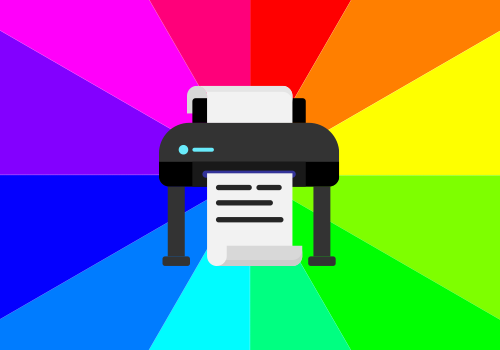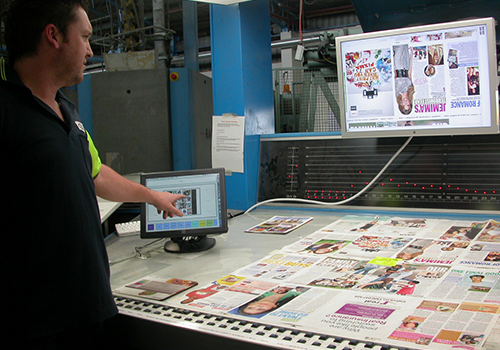Exploring Advanced Colour Spaces in Printing: Beyond CMYK and RGB
Colour is a vital aspect of the printing industry, as it plays a crucial role in capturing attention, conveying messages, and evoking emotions. Traditional colour spaces like CMYK and RGB have long been the foundation, yet as demands for precision and vibrancy escalate, a shift towards advanced colour spaces becomes imperative.
CMYK, the standard in print, is effective but inherently limiting. RGB, born in the digital realm, excels on screens but can pose challenges when translated to print. Both systems, though reliable, face constraints in achieving the broad spectrum of colours demanded by modern design and printing requirements.
The call for more vibrant, accurate colours pushes against the boundaries of traditional models. Enter the need for advanced colour spaces that can not only meet but exceed these expectations, ensuring that the final printed product mirrors the designer's intent with unparalleled fidelity.
One promising solution to the limitations of CMYK and RGB is expanded gamut printing. This innovative approach involves the addition of a selection of Red, Blue, Orange, Green, and Violet colour channels to the traditional CMYK, expanding the gamut and unlocking a broader range of reproducible colours. It's a leap forward, addressing the shortcomings of conventional models and opening new possibilities for vibrant and accurate colour reproduction.
Understanding Expanded Gamut Printing
Expanded gamut printing marks a departure from the conventional CMYK model by introducing additional colour channels. In this evolved approach, printers can incorporate a selection of Red, Blue, Orange, Green, and Violet inks alongside the standard CMYK set. The result is a broader colour gamut that surpasses what can be achieved with CMYK alone.
The addition of extra colour channels brings a host of advantages:
- Orange: Enhances warm tones, such as skin tones and sunsets, and extends the gamut for vibrant reds and oranges.
- Green: Improves reproduction of foliage, landscapes, and vibrant greens.
- Violet: Expands the colour gamut for purples and magentas, offering greater accuracy and richness.
- Red: Adds depth and intensity to red tones, providing a broader spectrum for accurate reproduction.
- Blue: Enhances the representation of cool tones, skies, and blues, contributing to a more comprehensive colour palette.
Incorporating expanded gamut printing enhances colour precision, enabling a more faithful reproduction of brand colours, intricate photographic details, and the nuances in digital designs. This advancement ensures a seamless alignment between the designer's creative vision and the final printed output.
Advantages of Expanded Gamut Printing
Expanded gamut printing methods offer several advantages in comparison to traditional printing methods, such as standard CMYK printing. Here are some key advantages:
- Enhanced Colour Reproduction: The primary advantage is the ability to reproduce a broader range of colours. By adding extra inks beyond the standard CMYK set, expanded gamut printing can achieve more vibrant and accurate colour representation.
- Better Reproduction of Spot Colours: Expanded gamut printing enhances the reproduction of spot colours. Traditionally, spot colours were used to reproduce specific shades, but expanded gamut methods aim to achieve similar results without the need for additional custom inks.
- Improved Colour Matching: The additional inks in expanded gamut printing provide finer control over colour matching. This can be particularly beneficial for accurately reproducing brand colours or achieving precise colour details in graphic design.
- Consistency Across Different Print Jobs: Expanded gamut printing methods contribute to more consistent colour results across various print jobs. This consistency is valuable for maintaining brand identity and ensuring that colours match across different printed materials.
- Versatility Across Print Applications: The versatility of expanded gamut printing makes it suitable for a wide range of print applications, from packaging to marketing materials. It allows for greater flexibility in meeting the colour requirements of various projects during the proofing stage.
- Reduced Colour Shifts: With expanded gamut printing, there is often a reduction in colour shifts during the printing process. This means that the colours intended in the design are more likely to be accurately reproduced on the final printed piece.
- High-Quality Photographic Reproduction: Expanded gamut printing is particularly beneficial for reproducing high-quality photographic images. The extended colour gamut allows for more faithful reproduction of intricate details and subtle colour variations in photographs.
These advantages collectively make expanded gamut printing methods an attractive choice for industries and applications that demand high-quality and accurate colour reproduction. It's important to note that the specific benefits can vary depending on the printing technology, the choice of additional inks, and the characteristics of the printed materials.
Challenges and Considerations
The journey into advanced colour spaces in printing, while promising, is not without its challenges.
- Colour Matching Complexity: Achieving precise colour matching is challenging due to the increased number of inks. Calibration and colour management are critical for accurate reproduction.
- High Initial Setup Costs: Implementing expanded gamut printing may require substantial investments in new equipment and technologies, leading to higher initial setup costs.
- Ink Compatibility and Availability: Selecting compatible inks is crucial, and the availability of suitable inks may vary. Incompatibility issues can affect colour accuracy and print quality.
- Workflow Integration: Integrating expanded gamut printing into existing workflows may pose challenges. Workflow adjustments are needed for efficient and seamless production.
- Consistency Across Printers: Achieving consistent results may be challenging when working with different printers. Standardising processes becomes crucial for colour consistency.
The Role of RIP Software in Advanced Colour Spaces
In the realm of advanced colour spaces, a colour-managed RIP serves as the indispensable bridge between your digital design and the tangible print. This is particularly crucial when dealing with expanded gamut printing, where extra colour channels like Red, Blue, Orange, Green, and Violet come into play.
Embedded within the capabilities of RIP software are techniques that go beyond mere interpretation. These techniques include the creation, maintenance, and utilisation of expanded gamut profiles. The software adeptly navigates the intricacies of these profiles, optimising colour representation by considering factors such as ink properties, printing substrates, and the unique demands of the expanded colour spectrum.
This comprehensive approach ensures that RIP software not only interprets but actively enhances the potential of expanded gamut printing, making it an invaluable asset in the pursuit of precise and vibrant printed outputs.
Beyond CMYK
Expanded gamut printing is a transformative force in the printing industry, redefining the boundaries of colour reproduction and unlocking a world of vibrant hues and unparalleled accuracy. By embracing advanced colour spaces, printers and designers can collaborate to create visually stunning and impactful pieces that surpass the limitations of traditional CMYK and RGB models.
The pursuit of advanced colour spaces in printing is a dynamic journey — one that balances innovation with practical considerations. As technology continues to evolve, and industries demand ever more vibrant and accurate colour representation, the exploration of advanced colour spaces remains at the forefront of pushing the boundaries of what is possible in the world of printing.



